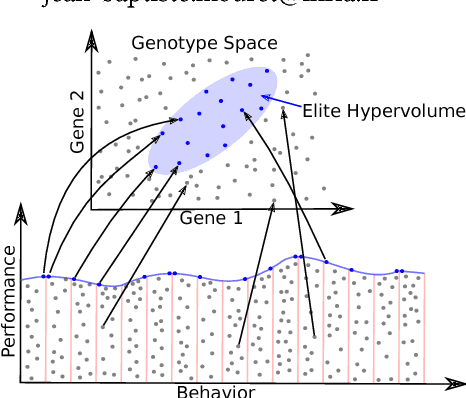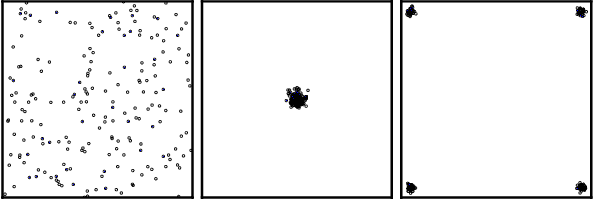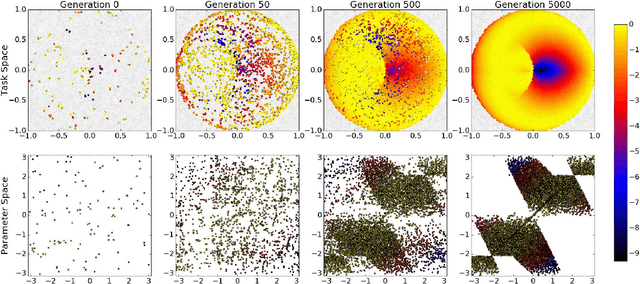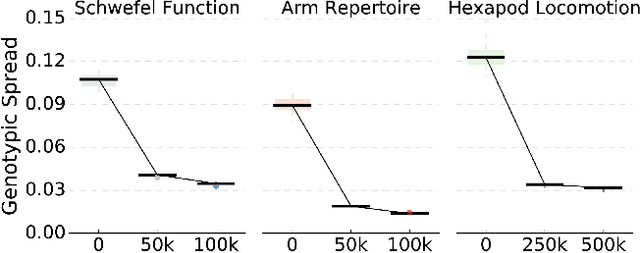Discovering the Elite Hypervolume by Leveraging Interspecies Correlation
Paper and Code
Apr 11, 2018



Evolution has produced an astonishing diversity of species, each filling a different niche. Algorithms like MAP-Elites mimic this divergent evolutionary process to find a set of behaviorally diverse but high-performing solutions, called the elites. Our key insight is that species in nature often share a surprisingly large part of their genome, in spite of occupying very different niches; similarly, the elites are likely to be concentrated in a specific "elite hypervolume" whose shape is defined by their common features. In this paper, we first introduce the elite hypervolume concept and propose two metrics to characterize it: the genotypic spread and the genotypic similarity. We then introduce a new variation operator, called "directional variation", that exploits interspecies (or inter-elites) correlations to accelerate the MAP-Elites algorithm. We demonstrate the effectiveness of this operator in three problems (a toy function, a redundant robotic arm, and a hexapod robot).
 Add to Chrome
Add to Chrome Add to Firefox
Add to Firefox Add to Edge
Add to Edge